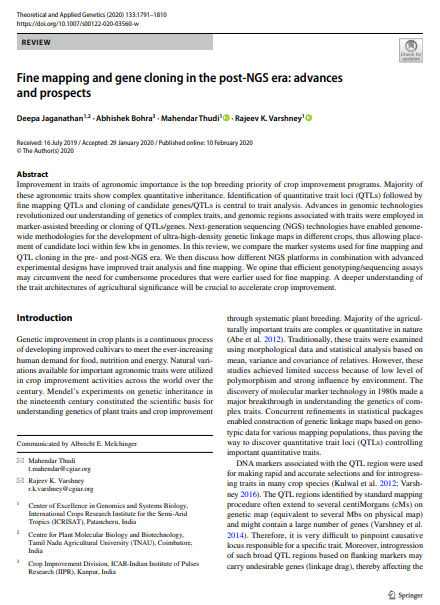Fine mapping and gene cloning in the post-NGS era: advances and prospects
Summary
Improvement in traits of agronomic importance is the top breeding priority of crop improvement programs. The majority of these agronomic traits show complex quantitative inheritance. Identification of quantitative trait loci (QTLs) followed by fine mapping QTLs and cloning of candidate genes/QTLs is central to trait analysis. Advances in genomic technologies have revolutionized our understanding of the genetics of complex traits, and genomic regions associated with traits have been employed in marker-assisted breeding or cloning of QTLs/genes. Next-generation sequencing (NGS) technologies have enabled genome-wide methodologies for the development of ultra-high-density genetic linkage maps in different crops, thus allowing the placement of candidate loci within a few kbs in genomes. In this review, we compare the marker systems used for fine mapping and QTL cloning in the pre- and post-NGS era. We then discuss how different NGS platforms in combination with advanced experimental designs have improved trait analysis and fine mapping. We opine that efficient genotyping/sequencing assays may circumvent the need for cumbersome procedures that were earlier used for fine mapping. A deeper understanding of the trait architectures of agricultural significance will be crucial to accelerate crop improvement.
Open resource Download resource Access resource on external site

